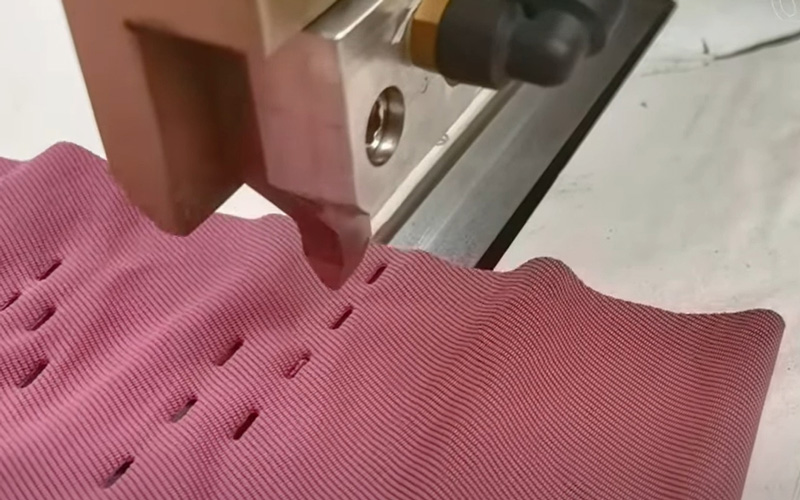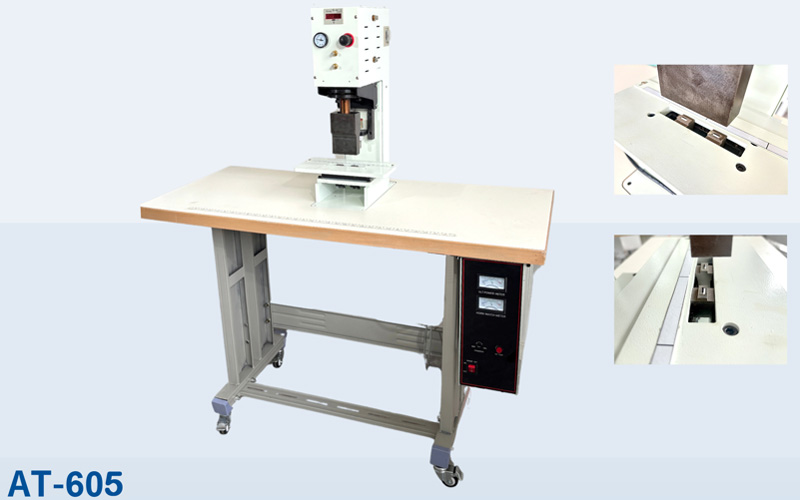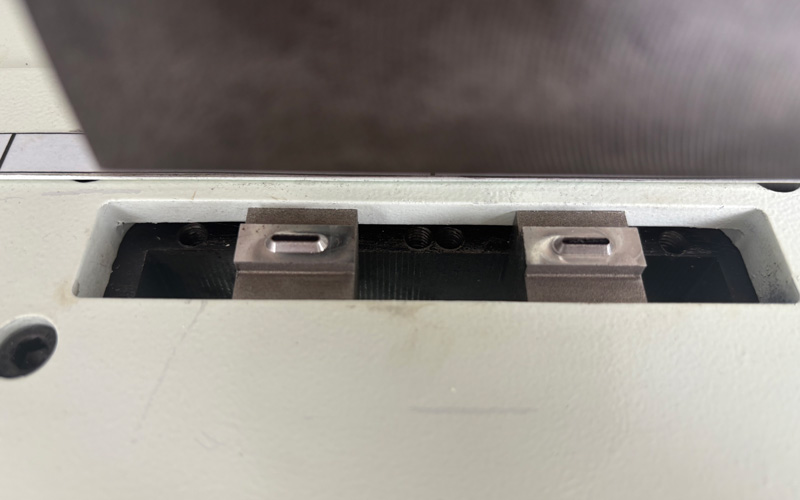In today’s fast-paced garment manufacturing industry, efficiency, precision, and material safety have become essential. Traditional buttonhole punching processes involving mechanical die-cutting or manual techniques are often plagued by inconsistent hole sizes, fabric fraying, and slow production speeds. Enter the ultrasonic buttonhole punching process—a revolutionary method that combines high-frequency vibration with localized heat to deliver flawless buttonhole cuts in seconds.
In this in-depth blog post, we’ll walk you through each phase of the ultrasonic buttonhole punching process, offer insights into its working principles, and provide a step-by-step demonstration of how ultrasonic technology transforms buttonhole manufacturing.
Whether you’re a textile factory owner, a production manager, or a machine distributor, this article will equip you with critical knowledge about this high-tech yet practical solution.

1. What Is Ultrasonic Buttonhole Punching?
Ultrasonic buttonhole punching is a non-contact cutting technology that uses high-frequency mechanical vibrations (usually 20kHz or more) to generate localized heat through friction. This heat melts and fuses synthetic fabrics at the point of contact, creating clean, sealed edges without fraying.
Why It Matters:
Provides sealed buttonholes that don’t unravel
Works especially well on synthetic or blended textiles
Offers automation and repeatability for industrial use
The process is ideal for:
Jackets
Workwear
Sports uniforms
Luggage and bags

2. Core Components of an Ultrasonic Punching Machine
Understanding the machine’s anatomy is key to mastering its operation.
| Component | Function |
|---|---|
| Ultrasonic Generator | Converts electrical energy into high-frequency vibrations |
| Transducer | Converts electrical signals into mechanical vibrations |
| Booster | Amplifies the ultrasonic vibrations |
| Horn (Sonotrode) | Focuses vibrations on the punching area |
| Mold/Die | Determines the shape and size of the buttonhole |
| Control Panel | Allows settings adjustment for frequency, power, and time |
| Foot Pedal/Automation Sensor | Triggers the punching process |
3. How the Ultrasonic Buttonhole Punching Process Works
Let’s simplify the physics:
High-frequency sound waves (ultrasound) are generated by the machine.
These waves travel through the transducer, booster, and horn, amplifying their energy.
The horn focuses energy on the buttonhole mold, which is pressed against the fabric.
The intense localized heat cuts through the fabric, melting the edges to seal them simultaneously.
The result is a precisely punched, clean-edged, durable buttonhole.
4. Step-by-Step Demonstration of the Ultrasonic Buttonhole Punching Process
Let’s walk through the full operation cycle using an industrial ultrasonic buttonhole punching machine.
Step 1: Preparing the Machine
Power on the machine and initialize the ultrasonic generator.
Check that the horn and mold are clean, aligned, and free of defects.
Adjust settings for fabric type, buttonhole size, and punching time via the control panel.
Step 2: Positioning the Fabric
Lay the garment or fabric piece flat on the punching platform.
Use laser guidance (if available) to align the buttonhole location precisely.
For batch jobs, use positioning jigs for fast placement.
Step 3: Activating the Punch
Engage the foot pedal or automation sensor.
The horn comes down onto the fabric, generating ultrasonic vibration.
Within 0.5 to 1 second, the buttonhole is punched and sealed.
Step 4: Releasing the Fabric
The horn retracts automatically.
Inspect the buttonhole—there should be no fraying, discoloration, or edge tearing.
Step 5: Repeat or Batch Process
For multi-hole jobs, shift fabric and repeat.
Fully automated models can punch multiple holes in succession with minimal human input.
Demonstration Recap:
Setup machine →
Position fabric →
Activate horn →
Punch & seal →
Repeat → Done!
5. Advantages Over Traditional Punching Methods
| Feature | Traditional Punching | Ultrasonic Punching |
|---|---|---|
| Edge Quality | Prone to fraying | Smooth and sealed |
| Speed | Moderate | High-speed |
| Maintenance | Mechanical wear common | Minimal wear |
| Fabric Compatibility | Natural fibers preferred | Ideal for synthetic/poly blends |
| Heat Control | External heating | Self-generated through vibration |
Other Notable Benefits:
No need for pre-heating
No burnt edges or discoloration
Reduced labor costs
Environmentally friendly (no cutting oils or waste)
6. Key Applications Across Industries
The ultrasonic buttonhole punching process offers exceptional versatility, making it highly valuable across a wide range of industries beyond traditional garment production. Its ability to deliver clean, sealed, and fray-free holes without damaging delicate fabrics or requiring additional finishing makes it a preferred solution for many specialized manufacturing needs.
Textile & Garment Industry
Polo Shirts & T-Shirts: Commonly used for front placket buttonholes, ensuring strong, sealed holes in polyester-cotton blends.
Formal Shirts & Uniforms: Offers consistent buttonhole shapes, enhancing the garment’s overall appearance and durability.
Lab Coats & Hospital Wear: Ensures hygienic, sealed holes resistant to fraying, suitable for industrial laundering.
Denim Jackets & Outerwear: Provides clean cuts through thicker or layered materials, especially for decorative buttonholes or eyelets.
Accessories & Bags
Backpacks & Tactical Gear: Creates ventilation holes or strap pass-throughs that are strong and sealed.
Pouches & Cosmetic Bags: Forms clean eyelets for drawstrings or fasteners, even on laminated or coated fabrics.
Automotive Interiors
Seat Covers & Trim Panels: Used to punch holes for hooks, fasteners, or sensors in synthetic leather or non-woven interiors.
Dashboard or Sun Visor Components: Enables accurate hole placement for inserts or attachments.
Medical & Hygienic Textiles
Gowns, Aprons, and Disposable PPE: Ultrasonic punching ensures sealed holes that resist microbial penetration and improve cleanliness.
Operating Room Fabrics: Ideal for sterile packaging, surgical drapes, and fastener points on medical garments.
Technical & Industrial Fabrics
Non-Woven Composites: Frequently used in filtration, geotextiles, or insulation materials to add mounting or fitting holes.
Industrial Tarps & Covers: Allows eyelet punching without compromising waterproof or weather-resistant properties.
Filter Bags & Dust Collector Fabrics: Enables precise cut-outs for installation without fabric degradation.
7. Selecting the Right Ultrasonic Buttonhole Machine
When investing in a machine, consider the following criteria:
A. Power Output
For thick or multi-layer fabrics, choose a 1500W–2000W model.
B. Horn Customization
Buttonhole shapes and sizes can vary. Choose interchangeable molds.
C. Automation Level
Manual: foot pedal operation
Semi-automatic: sensor-based trigger
Fully automatic: robotic arm + conveyor system
D. Control Interface
Look for digital displays and error diagnostics.
E. After-Sales Support
Ensure the manufacturer provides training, spare parts, and remote troubleshooting.
8. Maintenance Tips & Safety Guidelines
Maintenance Best Practices:
Clean the horn and die daily with non-abrasive alcohol.
Check the ultrasonic generator for overloading.
Replace molds if the shape deteriorates.
Lubricate the punching arm if mechanical.
Safety Tips:
Never touch the horn while vibrating.
Use protective gloves during manual adjustments.
Keep fabric flat to avoid snags or uneven cutting.
9. Frequently Asked Questions (FAQs)
Q1: What types of fabrics work best with ultrasonic punching?
A: Synthetic fabrics like polyester, nylon, spandex, and blends are ideal. Natural fibers like cotton may require special treatment.
Q2: Can I create different buttonhole shapes?
A: Yes. By changing molds/dies, you can customize the hole shape and size.
Q3: How long does it take to punch one buttonhole?
A: Typically 0.5 to 1.2 seconds depending on fabric thickness.
Q4: Will the machine damage delicate fabrics?
A: No. As long as settings are adjusted correctly, even delicate fabrics can be cut cleanly.
Q5: Is operator training required?
A: Basic training is sufficient. The process is user-friendly, especially with touch-screen models.
Q6: What is the typical lifespan of an ultrasonic horn?
A: With proper maintenance, horns can last for 1–2 years or longer depending on usage.

10. Final Thoughts
The ultrasonic buttonhole punching process is redefining how the textile industry handles precision cutting. Its fast cycle time, clean edges, and energy-efficient operation make it a go-to technology for modern garment manufacturers. From polo shirts to industrial bags, it ensures clean, durable, and aesthetically pleasing holes—a feature that customers will notice and appreciate.
If your production line still relies on manual punching or mechanical dies, it’s time to consider ultrasonic technology as a worthwhile upgrade.
Ready to Upgrade Your Buttonhole Production?
If you’re considering a faster, cleaner, and more precise solution for garment production, the ultrasonic buttonhole punching process is your answer. Whether you’re manufacturing polo shirts, technical uniforms, or industrial textiles, ultrasonic technology delivers consistent results with minimal operator effort.
At Alster Industry Co., Ltd, we specialize in providing reliable, customizable ultrasonic buttonhole punching machines tailored to your specific production needs. Our team offers full technical support, mold customization, and fast delivery worldwide.
📍 Alster Industry Co., Ltd
📧 Email: market@alsterindustry.com
📞 Phone / WhatsApp: +86 17621495137
🏢 Address: No. 947 Jinle Road, Baoshan District, 200941, Shanghai, China
📩 Contact us today for product catalogs, a free technical consultation, or to schedule a live machine demo. Experience the power of ultrasonic precision—trusted by factories across Asia, Europe, and beyond.
